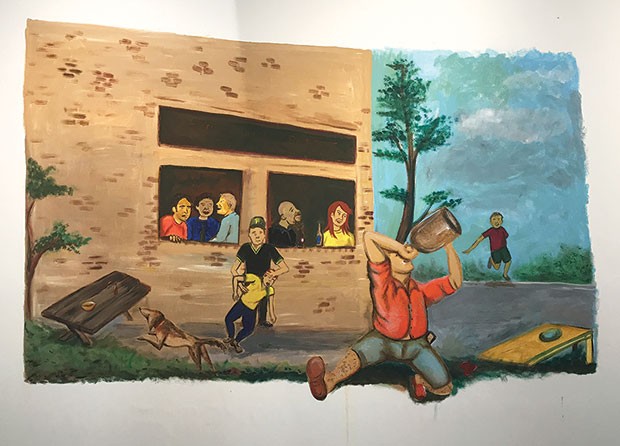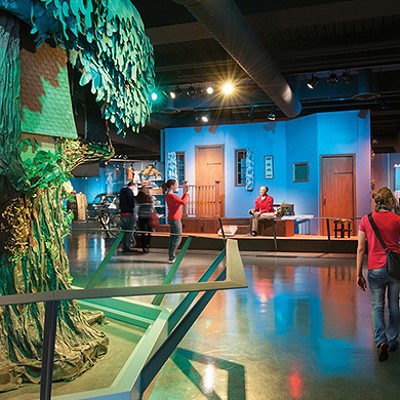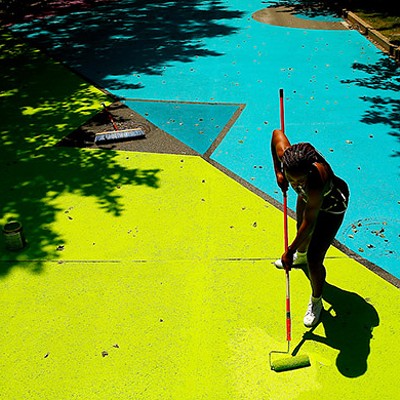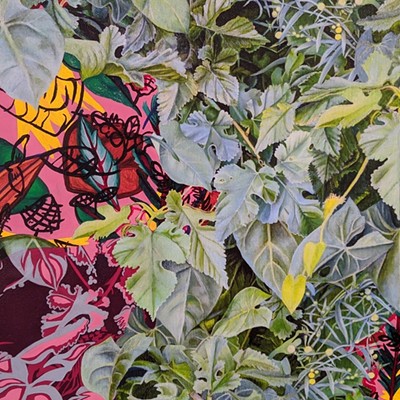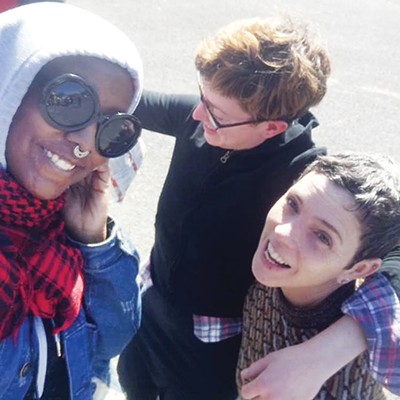July’s Pittsburgh Cultural Trust Gallery Crawl began early at SPACE Gallery in preparation for Wall Paintings: Storytellers. Works were not hung on the walls, but painted directly on them, by artists given eight hours to create their contributions in public view leading to that evening’s opening reception.
Robert Raczka, who has guest-curated three previous live-painting exhibitions at SPACE, selected a dozen artists or teams to participate. The premise, “storytelling” (arguably the premise for every single work of art ever generated), was the lone theme, and 12 feet by 12 feet the dimension. The result is a varied collection that follows the directive in ways ranging from specifically literal to highly interpretive.
Jayla Patton depicts the storyteller herself, mouth frozen mid-speech, caught in the act of spinning a tale to captivate her audience in “Better Than A Villian” [sic]. Patton typically works in comics, caricature, and animation, and her entry here is clean and vivid, evocative of old-school cartooning, charming in its simplicity. Longtime Pittsburgh art aficionados will immediately recognize the subject of Marcel Lamont Walker’s portrait as the late artist Judy Penzer, depicted with images from some of her best-known works; it’s great to see her again, and, for those who are unfamiliar, it’s great to be introduced to the person behind her iconic murals. Paulette Poullet’s “Game Day Bacchanal” incorporates intoxication, cornhole, dogs and sports; if you imagine a soundtrack of “Love Is Like A Rock” seguing into “Renegade,” it’s a carton of Turner’s away from being The Most Pittsburgh Artwork Ever, and is a damned good time. Nils Hanczar’s “Family History” takes a more holistic view of local life in what initially looks like a glorious narrative of a beautiful existence in a beautiful town, until you notice the labor necessary to support it all; the respect given to blue-collar work makes it beautiful and, well, emotional but not sentimental.
The biggest flaw in this exhibition is shared by all exhibitions of this kind. All of these works will go away, erased when the walls are painted over in preparation for what comes next. One hopes that the artists will incorporate these transient works into something permanent, as all deserve to continue.

